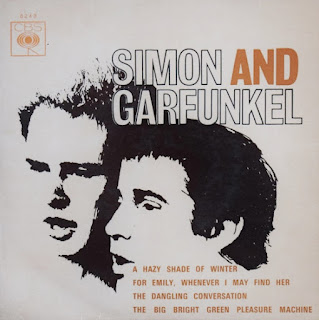SIMON & GARFUNKEL - THE 59th STREET BRIDGE SONG (FEELIN’ GROOVY)
Released: October 24, 1966
"The 59th Street Bridge Song (Feelin' Groovy)" is a song by the folk rock duo Simon & Garfunkel, penned by Paul Simon and initially featured on their 1966 album "Parsley, Sage, Rosemary and Thyme." The song references the 59th Street Bridge, officially known as the Queensboro Bridge, which spans the East River in New York City, connecting Queens to Manhattan. Simon & Garfunkel, being natives of New York, capture the essence of the bustling city and its fast-paced lifestyle. In this song, they advocate for slowing down and appreciating life's simple pleasures, such as cobblestones and flowers.
During a performance at Tufts University in 1966, Paul Simon shared insights into the inspiration behind "The 59th Street Bridge Song (Feelin' Groovy)." He recounted his experiences from the previous year, highlighting his return from England to the United States in December 1965. At that time, "The Sound of Silence" had soared in popularity, thrusting him into a newfound level of fame and recognition. Simon admitted to struggling with this transition, feeling overwhelmed by his sudden semi-famous status. Initially, he found himself writing melancholic and introspective songs, reflecting his state of mind.
By June of the following year, Simon began to emerge from this gloomy phase and found himself in better spirits. One memorable morning, as he crossed the 59th Street Bridge in New York City around 6 o'clock, he was struck by the beauty of the day and the sense of optimism it evoked. In that moment of clarity and contentment, he felt inspired to capture the essence of the uplifting experience in a song. Thus, "The 59th Street Bridge Song (Feelin' Groovy)" was born, thanks to the joy and serenity of that particular morning stroll.
"The 59th Street Bridge Song (Feelin' Groovy)" is notable for being one of the first instances of the word "groovy" appearing in a popular song. This usage of the term inspired songwriters Carole Bayer Sager and Toni Wine, who later penned the hit song "A Groovy Kind of Love”.
Despite its enduring popularity and status as one of Simon & Garfunkel's most recognizable songs, "The 59th Street Bridge Song (Feelin' Groovy)" never achieved significant chart success for the duo. In 1967, Harpers Bizarre released a more pop-oriented version of the song with higher vocals. This rendition managed to chart, reaching #13 in the US and #34 in the UK.





























































